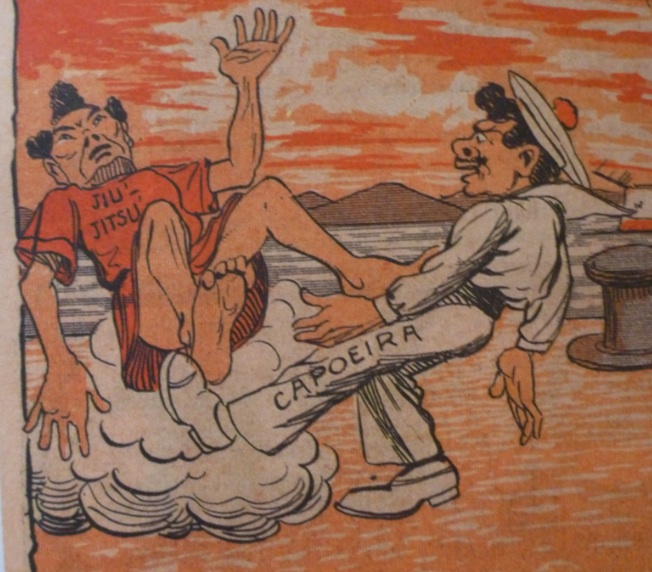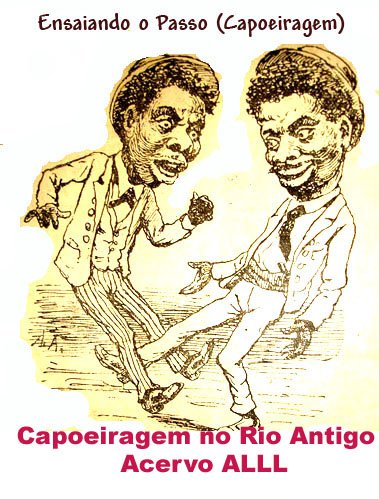
https://www.youtube.com/watch?v=_vrTtWCPQgs
Another primary technique of old Capoeiragem Carioca was Rasteira,a standing footsweep.

(Capoeira gives a Rasteira to Japanese jujutsu).
This was nothing like the modern capoeira rasteira, which is done low and is supposed to be applied against a kick; Carioca Rasteira was a takedown, done against a standing opponent.

Neither it is similar to modern standing 'rasteiras'; either done using Snake, or Rooster mechanics (I will talk about this more in my article about rasteiras). This is best seen from the fact these do not work against a standing opponent.
Here is how you execute a proper Rasteira:
The throw is done against opponent's front leg; enter from his front.
It has two parts: In the first part, you hook opponent's heel and pull him forward off balance; in the second part, you throw him by lifting his leg upward.
The pull is done using Snake mechanics; the throw is done using Crane mechanics. (This is important; the mechanics must be right for the throw to work).
Note that the opponent is thrown into the air and smashed down; this is not just a footsweep!
Notes:
-Rasteira is best applied against opponent's on-guard stance; it is a type of guard-breaker.
-You can apply Rasteira both from the outside and inside of opponent's front leg.
-You can also squat on your supporting leg to get lower; if you get so low your are supported on your hands, it is a low Rasteira, which is a separate technique which will be discussed later.
-Note that the angle of entry for Rasteira is from the front.
-In a fight, finish the downed opponent by stomping on his head, chest or groin.
Dark rasteira
There is a little dark trick you can use when executing this Rasteira: Instead of hooking opponent's heel, hook the middle of his calf.
The Snake pull will then not only unbalance him to the front; it will also hurt(possibly luxate) his front ankle.
Then continue with Crane kick, as normally, to throw him down.
(For those interested: This trick does not work for Low rasteira).
-
Note: In the ODC manual (1904), this Rasteira is called 'Rasteira moderna'. In contrast, 'Rasteira antiga' is like a standing Corta capim (we will get to Corta capim later).
This Web Page was Built with PageBreeze Free HTML Editor